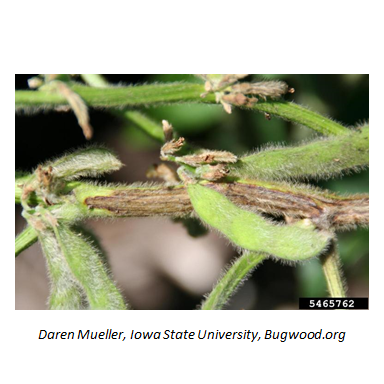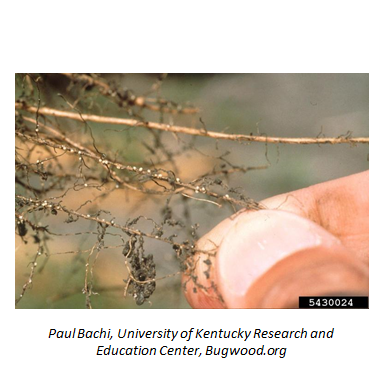Tips for Managing 6 Serious Soybean Diseases
There’s no shortage of diseases waiting to descend on your soybean crop. No matter where you farm, managing disease requires integrated action from planting to harvesting. Scouting and record-keeping are two tools that – when used in addition to the information below – can help you save considerable yield. The summaries below are guidelines and should be supplemented with information from your local extension on regional thresholds.
White mold: A fungus affecting Midwest farmers in cool conditions
Persistent and volatile white mold spreads via spores during flowering. It is an annual threat to soybeans in northern and near-northern states. Rotation is only a partial solution, as sclerotia can survive in the soil for up to 10 years, so spraying fungicide labeled for white mold control is recommended. While early planting and narrow rows have been shown to increase yield potential, these factors can also increase your risk of white mold. Consider your field history before deciding how to manage this disease.

Frogeye leaf spot: Growing prevalence and severity in southern states
Infection can occur at any stage of soybean development, but it occurs most often after flowering. Rotating out infected soybean fields for at least two years will help reduce risk. Fungicide seed treatments and fungicides applied after R1 can reduce disease severity. Applications made at R3 are considered most effective in southern states.
Brown stem rot: Incognito infection with symptoms hidden in roots

Since it requires somewhat cooler weather, brown stem rot mainly affects the north-central growing region. This disease may cause yield loss without producing striking symptoms. It is important to keep good notes on your fields to identify problem areas and to determine if the affected areas are becoming larger over the years. Varieties with resistance to brown stem rot should be used only when high disease pressure is anticipated in an infested field. Maintaining soil pH at 7.0 will reduce the risk of brown stem rot.
Charcoal rot: Heat-loving disease that strikes at early reproductive stages
This disease is common in the southern states and even in the Midwest during hot, dry seasons. Infection may occur early in the season, but symptoms typically do not develop until after flowering, when plants become stressed. Reduced tillage and rotation with a small grain, such as wheat or barley, are the best management practices. Identification is particularly important if it occurs in seed fields because infected seeds have lower germination.

Stem canker: Disease spreads field to field on contaminated farm equipment
Treat seed with fungicide that contains carboxin and thiram. The most vulnerable time for infection is the V3 stage, when three nodes are present on the main stem of the plant. The leaves of soybean plants exhibit a distinct yellowing, and later browning, between veins. As plants enter the middle pod-fill stages, cankers begin to form and the disease progresses until plants die. Avoid replanting in infested fields. Instead, plant a non-host (non-legume crop) for at least 2 years.
Soybean cyst nematode: Soybean susceptibility to diseases increased with SCN
In addition to its own effects on a soybean crop, soybean cyst nematode (SCN) can also make your plants more susceptible to contracting other diseases. By the time one nematode is seen on the roots or in soil, more are likely already in the field. One cyst can hold up to 500 eggs and 2 to 3 cycles can take place in just one soybean-growing season. Once SCN is detected in the soil, an integrated approach should be employed, including crop rotation and use of resistant varieties.
Source: United Soybean Board


